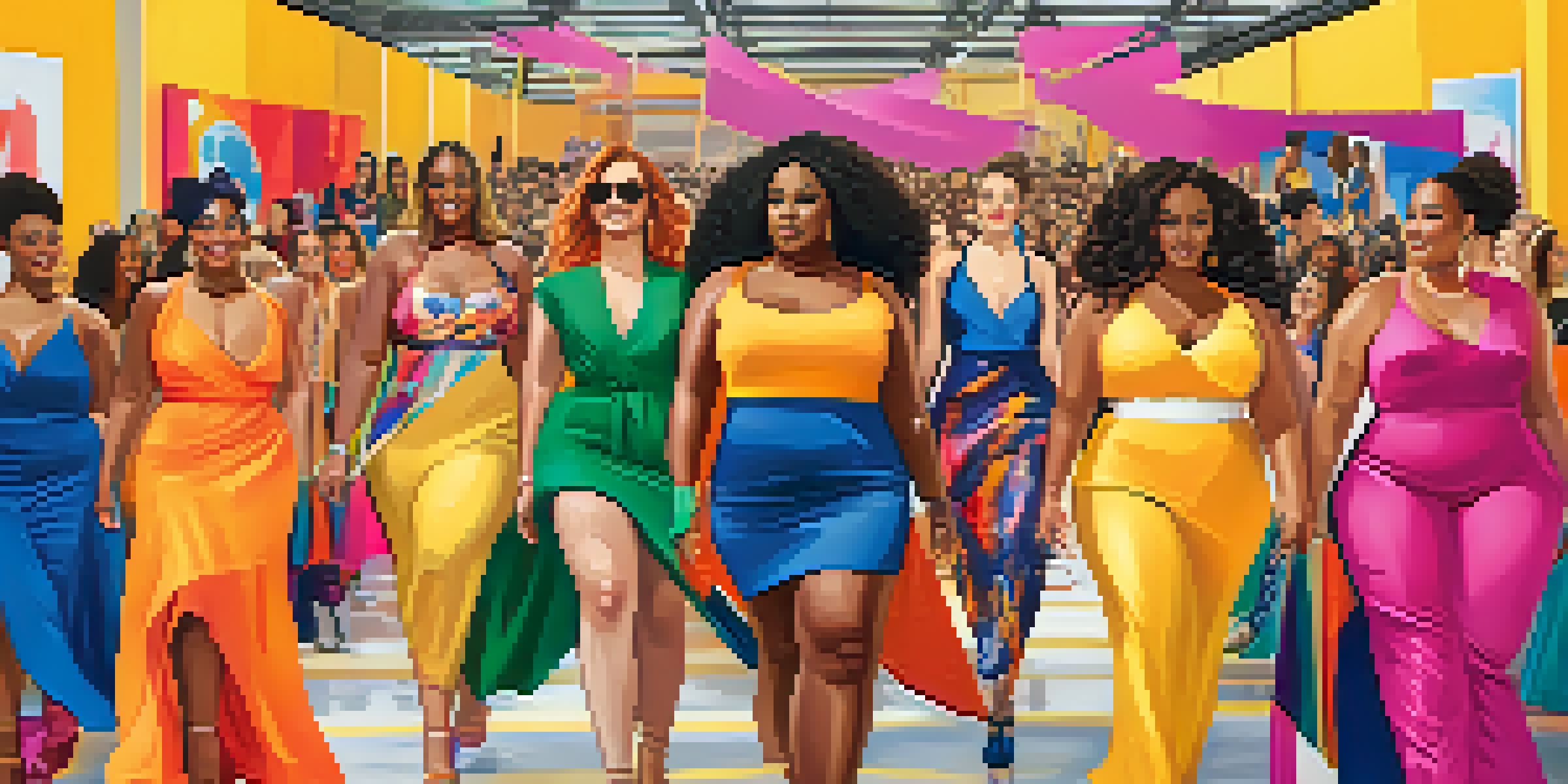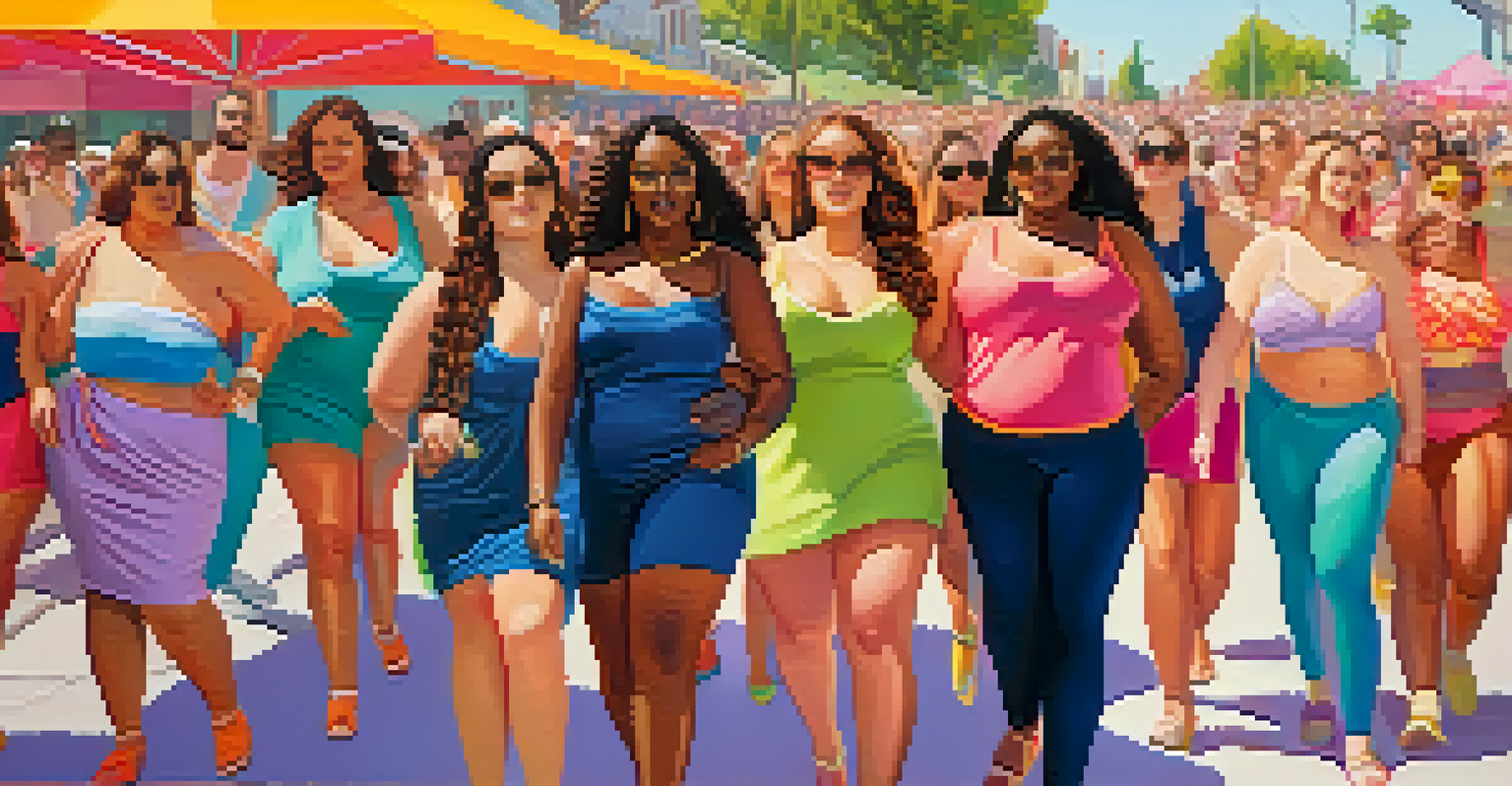The Representation of Plus-Size Models in Modern Fashion

The Evolving Landscape of Fashion Representation
Fashion has always been a reflection of societal norms, but in recent years, the landscape has started to shift. The inclusion of plus-size models in mainstream media represents a critical change in how beauty is defined. By showcasing diverse body types, brands are challenging traditional standards that have long dominated the industry.
The beauty of a woman should be seen from her eyes, because that is the doorway to her heart—the place where love resides.
This evolution isn't just about aesthetics; it's about representation and empowerment. Plus-size models are not merely filling a quota; they are paving the way for a broader acceptance of all body types within fashion. As more brands embrace inclusivity, we’re beginning to see a positive impact on consumer perception and self-image.
It's important to recognize that this movement is not just a trend but a necessary step toward creating a more inclusive fashion environment. While there is still work to be done, the growing visibility of plus-size models signifies a shift towards better representation that resonates with a wider audience.
The Role of Social Media in Amplifying Voices
Social media has played a pivotal role in amplifying the voices of plus-size models and advocates. Platforms like Instagram and TikTok have provided a space for these individuals to share their stories, promote body positivity, and challenge existing stereotypes. This democratization of fashion allows for diverse representation that was often absent from traditional media.

Moreover, influencers and models are using their platforms to engage with audiences directly, fostering a sense of community. Followers can relate to their journeys, gaining inspiration from their confidence and style. This connection encourages a more inclusive dialogue about body image and fashion, which was previously dominated by a narrow definition of beauty.
Fashion Embraces Body Diversity
Plus-size models are redefining beauty standards and promoting inclusivity in the fashion industry.
Through hashtags, campaigns, and viral content, the conversation around body diversity has gained momentum. As the audience demands more representation, brands are responding, recognizing that their consumers want to see themselves reflected in the products they purchase.
Challenges Faced by Plus-Size Models
Despite the progress, plus-size models still face significant challenges in the fashion industry. Many brands continue to offer limited sizing and lack representation in their campaigns. This can create a frustrating experience for consumers who seek stylish options that cater to their body type.
Fashion is about something that comes from within you.
Additionally, plus-size models often deal with stigma and bias both within the industry and from the public. They may be subjected to negative comments or pressure to conform to certain beauty standards, which can be discouraging. This reality highlights the need for continued advocacy and awareness around body diversity.
While the landscape is improving, it’s vital to address these challenges head-on. By encouraging brands to expand their size ranges and by promoting a culture of inclusivity, we can help create an environment where plus-size models thrive.
The Impact of Plus-Size Models on Consumer Behavior
The representation of plus-size models has a significant impact on consumer behavior and purchasing decisions. When consumers see models that resemble themselves, they are more likely to feel represented and valued. This connection can lead to increased brand loyalty and a greater willingness to support companies that embrace diversity.
Furthermore, research suggests that body diversity in advertising can lead to a boost in sales. Brands that showcase plus-size models are often viewed more favorably, appealing to a broader demographic. This shift in consumer expectations encourages companies to rethink their marketing strategies and embrace inclusivity as a key component.
Social Media Amplifies Inclusivity
Platforms like Instagram and TikTok enable plus-size advocates to share their journeys, fostering community and representation.
Ultimately, this change benefits both consumers and brands alike. As more companies recognize the power of representation, we can expect to see a positive shift in the fashion industry towards more inclusive practices.
Fashion Shows and Plus-Size Representation
Fashion shows have traditionally been a platform for luxury brands to showcase their latest collections, but this is changing. Increasingly, plus-size models are being included in runway shows, challenging the stereotype of the 'ideal' model. This visibility not only empowers the models themselves but also sends a strong message to the fashion community about inclusivity.
Notably, some brands have made headlines for featuring exclusively plus-size models in their runway shows, a bold move that has sparked conversations across the industry. This shift encourages other designers to consider how they can incorporate diverse body types into their presentations, making fashion more accessible to everyone.
As more designers embrace this change, we can expect to see a ripple effect that influences future seasons. The inclusion of plus-size models on the runway is a clear indicator that fashion is moving toward a more inclusive future, where all bodies are celebrated.
Consumer Demand for Inclusivity in Fashion
Consumer demand for inclusivity in fashion has never been stronger. As society progresses, people are increasingly vocal about their desire for brands to reflect the diversity of their customer base. This demand is not merely a trend; it's a movement that is reshaping the industry from the ground up.
Many consumers now actively seek out brands that prioritize diversity and inclusivity in their marketing and product offerings. They are more likely to support companies that feature a range of body types in their advertising and provide inclusive sizing. This shift in consumer priorities is encouraging brands to adapt their practices to meet these expectations.
Consumer Demand Drives Change
Shoppers increasingly prefer brands that showcase diverse body types, pushing the industry towards more inclusive practices.
Ultimately, the message is clear: consumers want to see themselves represented. Brands that listen and respond to this demand will not only foster loyalty but will also contribute to a more inclusive fashion landscape.
The Future of Plus-Size Representation in Fashion
Looking ahead, the future of plus-size representation in fashion appears promising. As conversations around body positivity and inclusivity continue to gain traction, we can expect to see even more brands embracing diverse models. This shift is not just beneficial for the industry but is essential for societal progress.
Moreover, the ongoing advocacy from plus-size models and activists is crucial in pushing for change. Their voices help to keep the conversation alive and ensure that the demand for inclusivity remains at the forefront of the fashion industry. With each step forward, the barriers that once limited representation are gradually being dismantled.

Ultimately, the future holds the potential for a fashion industry that truly reflects the diversity of its consumers. By embracing inclusivity, brands can create a more equitable environment where all bodies are celebrated, and everyone feels confident in their skin.